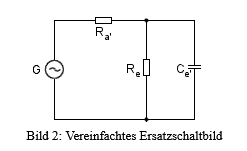east electronics
Επαγγελματίας
- Μηνύματα
- 1.555
- Reaction score
- 1.518
Εισαι τραγικος τυποςΟι μετρήσεις θα γίνουν να για δούμε αν όντως υπάρχουν διαφορές της τάξης του 0,70 dB .
Σας υπενθυμίζω ότι o East Electronics δήλωσε σε αυτό το θέμα ότι μέτρησε διαφορά μέσης στάθμης 0,7 dB μεταξύ δύο καλωδίων Α & Β. Απέφυγε να απαντήσει στην ερώτηση που του έκανα , οπότε δεν γνωρίζουμε ποια ήταν τα δείγματα .
θα χρησιμοποιήσω και στις δικές μου δοκιμές ροζ θόρυβο, ο οποίος παράγαται από την γενήτρια του ARTA.
Πρόσθεσα στη λίστα και κάποια ομαξονικά RG58 & RG59, καθότι ο κ. Van Den Hul (VDH), μετά από ερώτηση που του έθεσε ο East Electronics, απάντησε με γρίφους για την καταλληλότητα τους σε εφαρμογές audio ως line interconnects.
Μας λέει εν ολίγοις ότι οι νόστιμες πίτσες θέλουν τον σωστό μάγειρα και τη σωστή συνταγή. Δεν είναι όλες οι πίτσες το ίδιο νόστιμες , θέλοντας να μας πει ότι τα δικά του καλώδια διαφέρουν από τα υπόλοπα , θα έλεγε κανείς ότι είναι νόστιμα και μοναδικά.
Εσύ μην ξεχνάς ότι μέτρησες διαφορές καλωδίων 0,7 dB σε μέση στάθμη με ένα κινητό σε ένα χώρο που δεν είναι ηχητικά φροντισμένος για μετρήσεις ακριβείας. Βάσει αυτού, έβγαλες το συμπέρασμα ότι είναι σημαντικές διαφορές καθότι το ένα καλώδιο περνούσε περισσότερη πληροφορία στο σύστημα από το άλλο.
Κάνε υπομονή και θα μάθεις δυο-τρία πραγματάκια .
Εκτος του οτι δεν εχεις ιδεα τι συζηταμε τελικα δεν εχεις τη ικανοτητα να αντιληφθεις αυτο που διαβαζεις
Για τελευταια φορα ο χωρος το συστημα δεν παιζει κανενα απολυτως ρολο ( αρκει να μην αγγιξεις τιποτα απολυτως και πουθενα εκτος απο το ιντερκονεκτ ) οταν η μετρηση προσπαθει να διακριβωσει καποια διαφορα μεταξυ ενος καλωδιου Α με ενα καλωδιο Β Δεν χρειαζεται ακριβεια στην μετρηση απλη αρκει να μας δειξει αν υπαρχει διαφορα και αρκει να επανληφθει η μετρηση και φυσικα να παραγει το ιδιο αποτελεσμα καθε φορα .
τα υπολοιπα το να δεις γιατι συμβαινει αυτο ειναι η επομενη συζητηση .
Το καλωδιο που μπηκε πρωτο ηταν ενα
Oehlbach NF Ice Blue Audio Interconnect Cable 2 x RCA - 2 x RCA 0.8m ( ομοαξωνικο )
και το καλωδιο που εκανε την διαφορα ηταν
Το Epitome MK2 της mamalos.com (συστρεμενο)






